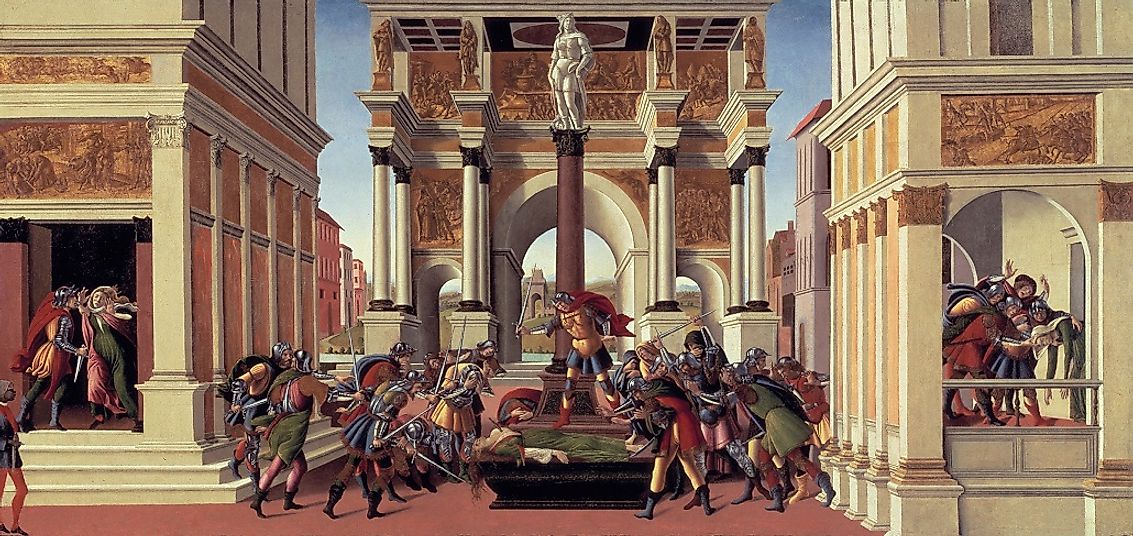The Roman Republic: 509 BCE to 27 BCE

5. Formation
The fall of the Roman Kingdom ushered in the Roman Republic. The new power now resided in the office of the Consul, which was in its earliest days composed of nobles sympathetic to the people of Rome. Namely, these revolutionary aristocrats included Poplicola, Lucius Junius Brutus and Lucius Tarquinius Collatinus, who took power in 509 BC in a revolution that overthrew the Roman Monarchy. The era was marked by the maneuvers in war and diplomacy that were soon to cover most parts of Italy. North Africa, Spain, and Southern France were annexed within the following century. The conquests and annexations continued, and, after two hundred years, Greece, most of the rest of France, and the eastern Mediterranean also became protectorates of Rome. At this junction of Roman history, civil war was about to change the landscape of the republic with the death of an important statesman just before the "BC Era" gave way to the Common Era.
4. Rise To Prominence
The Roman Republic, at the onset, was mere interested in protecting its borders than anything else. This, however, developed into expansion as it defeated the belligerent states surrounding its borders. Although the Roman campaigns continued to cross European borders, these were essentially about lending military assistance to the countries that requested it. The Sabines, Etruscans, the Gallic tribes, the Macedonians, the Seleucid Empire, the Greeks, and the Celts were at one time or another threats to Rome. Rome suffered many defeats against Carthage but, in the end, Rome burned and pillaged its capital and annexed its territories. Yet, Rome was internally being taken apart by the conflicts between its own separate classes.
3. Challenges
The conflict over the ordering of the classes was the cause of most of the internal strife that occurred in the ancient Roman Republic. In 66 BC, a constitutional movement arose with the aim of alleviating the plight of the masses. The Senators, Consuls, and plebeians were all involved in schemes and resolutions to appease their respective classes. The conflicts deepened as the plebeians were given more power by the Senators. The rise of the Plebeian class did not do anything for the ordinary plebeian citizens, however, who were still left out by the newly rich plebeians. As the grabs for power and wealth continued, assassinations and mass murders continued to change the fortunes of everyone concerned.
2. Demise
The demise of the Republic began with the rise and fall of Julius Caesar. A patrician, an orator, and a military genius, he led his legions through many successful military forays into enemy territories, and made them part of the expanding Roman territories. The mistake that Caesar made was to underestimate the Senate in his run for power. He was joined in a triumvirate to hold power over Rome by Pompey and Crassus. But Crassus's early death in battle left him open to Pompey's scheming. Pompey instigated a battle with Caesar, but lost. Thereafter, Caesar now had the sole control of Rome, but the Senate hatched a plan to murder him when he declared himself as a dictator for life. Nonetheless, as the first Emperor, he paved the way for centuries of the new Roman Empire to follow, effectively replacing the Republic.
1. Legacy In History
The legacy of the Roman Republic in some ways brought an end to its own existence. The Greek art, architecture, and religion dominating the republic reached new heights in the new Roman Empire. In Renaissance Europe, art and culture were also influenced by the republic many centuries later. In Tudor and Stuart England, the controversy of political succession was widely discussed using the Roman Republic's history as precedent. In America, the US Constitution contains many laws that were based on the laws and ideas of the Roman Republic. Many other democracies around the world were founded on the idea of democracy created during the Republic as well. The idea of a Republican utopia acted as inspiration for the American and French Revolutions in the Eighteenth Century, which themselves inspired many more to follow.











